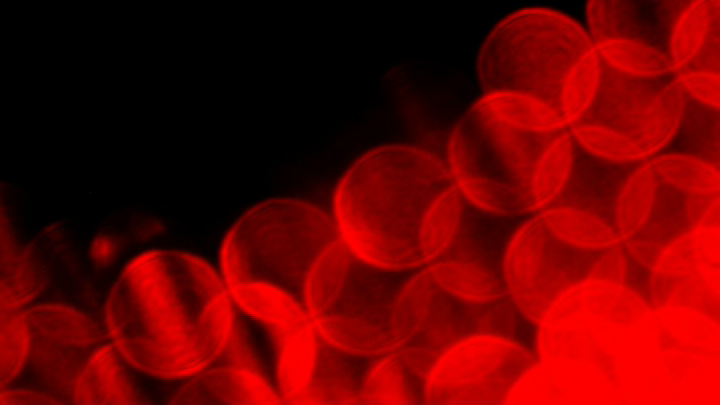Here are two words we never thought we'd put together: blood lasers. Researchers at the University of Michigan are currently developing blood-based lasers that could someday help doctors spot tumors in the human body. The team published a report of their progress in the Optical Society of America Technical Digest.
This is slightly less out-of-the-blue, what-the-actual-heck than it sounds. Lasers have three core components: a source of light, some way to amplify it, and a reflective chamber. There’s no rule stating that these elements have to be made out of metal, glass or plastic. Scientists have been interested in the optical capabilities of living cells for a few years now, and the first such “living laser” was built at Harvard University in 2011 using glowing sea-creature proteins and active kidney tissue.
University of Michigan researchers have created bio-based lasers before, too. In collaboration with "living laser" Harvard researcher Seok-Hyun Yun, in 2013 Xudong Fang experimented with light in gelatin, and earlier this year, the Michigan team described a new way to turn plants’ light-sensitive chlorophyll into laser beams.
In the current study, they wanted to see what they could do with a dye called indocyanine green (ICG), which fluoresces in near-infrared light. ICG is safe and it’s already used in medical imaging. The researchers figured that if they could get it to glow, ICG would make a great light source for a new kind of living laser.
Initial experiments with ICG were unimpressive; on its own, the dye’s light was weak at best. But as soon as the researchers mixed ICG into blood and exposed it to a conventional laser, they saw a good, bright light, created when molecules of dye bound themselves to plasma proteins. The blood had, in effect, become the second essential component of a laser.
The next step for the team will be finding or creating those reflective cavities in living tissue. One possibility is gold nanoparticles, which might be able to bounce the light beautifully without causing harm.
Eventually, the researchers hope to get their blood lasers going in human bodies. They envision a world in which doctors could check for tumors simply by shining a laser over their patients’ skin. The tricky part will be ensuring that the light produced will be within safe limits, study co-author Xudong Fan told New Scientist. “You don’t want to burn the tissue.”
Agreed.
[h/t New Scientist]
Know of something you think we should cover? Email us at tips@mentalfloss.com.
